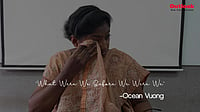Twice, over 24 years, Aditya Arya tried to open the boxes that photojournalist Kulwant Roy delivered to him, bit by bit, on his Lambretta scooter before he died, anonymous and impoverished, in 1984. But each time, he gave up. There was just too much in those boxes, explains Arya, an advertising photographer with a busy schedule.
There is still too much. On the eve of the first exhibition of Roy's work, which opens at Delhi's Indira Gandhi National Centre for the Arts (IGNCA) on October 3, thousands of Roy's negatives, in neatly labelled boxes, remain unseen. But the 7,000-odd that Arya has digitally scanned since December 2007—when he finally began to unpack the legacy that Roy, a family friend, had bequeathed him—are glimpses of a historical treasure house.
One part of the unfolding story is that several striking images, capturing scenes from the last years of British rule and the early decades after Independence, have turned out to be Roy's work: Gandhi and Jinnah arguing in 1939, Nehru and Ghaffar Khan strolling in Simla while Sardar Patel goes past in a palki, Nehru's hand curled tenderly around grandson Rajiv's neck, Mountbatten presiding over Partition talks, Gandhi walking along rough terrain in the North Western Frontier Province, in 1938, with the Frontier Gandhi in tow and a jaunty soldier flaunting a pair of grenades at Haji Pir pass in the Gurez sector, after India captured it in the 1965 war. Photo editors know those pictures, which are stored in photo archives and have been reprinted over the decades but credited to nameless stringers. Only now are these omissions beginning to be repaired. Getty Images, which holds the 1939 Gandhi-Jinnah picture, has retrospectively credited Roy for it, after verifying Arya's claims. "Margaret Bourke-White and Henri Cartier-Bresson were brands. Their images of India became iconic. But photographers like Roy did not get the recognition they deserved. They worked very hard, for peanuts," says Arya.
In his white shirt and dark pants, a Leica, Rolleiflex and other cameras strung around his neck, Roy looks the very picture of the modest homegrown photojournalist, lurking on the fringes of history. But both the man and the photographer were far from ordinary. The man protested against racism in his youth, travelled to over 30 countries in his lifetime, paying his way with his pictures, fell in love with a Japanese girl, and in the end, remained a bachelor. The photographer hopped indefatigably from event to event, expertly freezing moments from the rapidly changing political landscape of India from the '30s to the '60s, with technology that allowed no room for error or delay. His meticulously labelled boxes of negatives mutely await the attentions of the archivist and the historian: Cripps Mission, Simla Conference, Cabinet Mission, Muslim League meetings, Gandhi's funeral, Nehru's death...
Arya's labours have unearthed evocative pictures that show how Roy made full use of the easy, informal, security-free access that photographers of his day had to leaders of the emerging nation-state. "One of the most remarkable features of Kulwant Roy's photography is the de-iconisation of iconic figures by capturing their off-the-cuff moments and thereby making them more humane and approachable," says Prof Jyotindra Jain of the IGNCA. In Roy's world of images, Nehru runs the gamut from press conference-induced exasperation, to affection almost leaping out of the frame in a Holi session with Congress compatriots, to debonair ease in the company of intriguingly unnamed white ladies. Iron Man Patel leans on Gandhi's shoulder; soldiers of the Indian National Army serenade Gandhi with, of all things, a violin. Jinnah travels like a modern potentate in a Muslim League procession but exudes both resolve and pathos during his last press conference in Delhi Extraordinarily, women from princely families mark the dawn of Indian democracy by applying raj tilaks to Nehru and other leaders in a ceremony on the eve of Independence.
As India became independent, the chronicler began to reveal himself as a poet, his soaring images of the Bhakra Dam reflecting all the optimism of new nationhood. But Roy's own life took a more pessimistic turn. Shattered by the theft of pictures taken by him while travelling abroad, he fell into a depression, and shot very little in the last two decades of his life. As the work of his productive years finally begins to get its deserved share of the limelight, Sadanand Menon, professor of arts, culture and photography at Chennai's Asian College of Journalism, argues passionately for greater recognition for Roy's generation of photographers, and for the archiving and preservation of their work. "They were regarded as camera coolies," he says, "but what they shot is visual history."
History On Bromide
From the convulsive '40s to the hopeful '60s—an exhibition finally recognises forgotten photojournalist Kulwant Roy

History On Bromide
History On Bromide
Published At:
MOST POPULAR
WATCH
PHOTOS
×
















